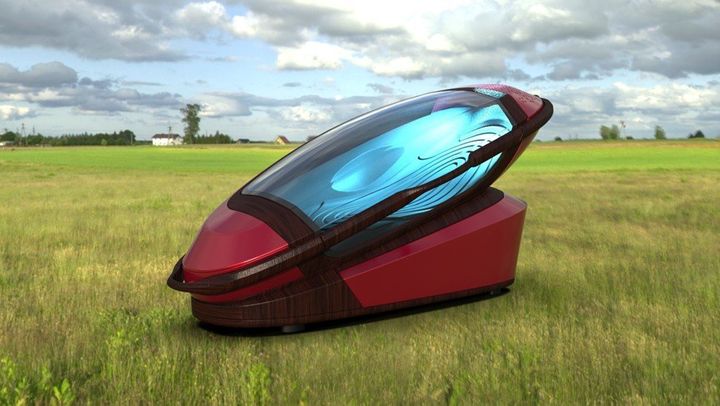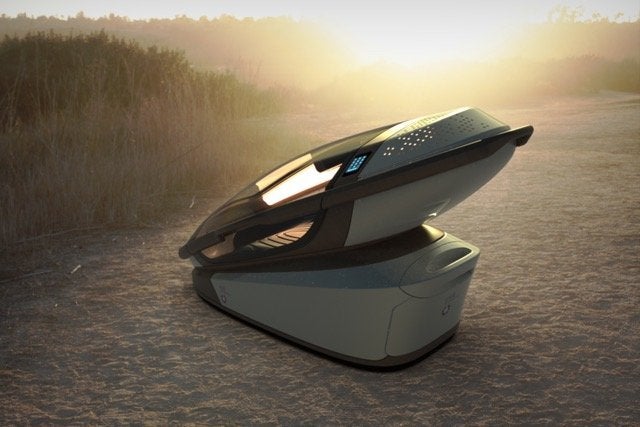
Talk about “dying with dignity” has grown to a calamitous pitch in recent years. “Right to die” groups vie for supremacy, trying to show who can make the dying experience the least degrading. Who can replace the utter macabre-ness of the necessity of death with something more palatable.
In this reclamation of death ― a change from the silence of the past decades, when the subject was even hidden from children ― the focus on dignity is an admirable, yet somewhat clumsy, catch-all for how we should all want to die.
Don’t get me wrong: I’m not critical of the intentions or semantics of the current discussion; it’s just that there seems something lacking ― at least to me.
Some 20 years ago, I became the first physician in the world to administer a legal, lethal, voluntary injection to four of my terminally ill patients (under Australia’s short-lived Rights of the Terminally Ill Act). At the time, I approached death with the confidence, and even arrogance, of someone in the middle of his life. I was about to turn 50. At a psychological level, death was still something that happened to other people.
As my work in this field has matured, my vision has shifted from supporting the idea of a dignified death for the terminally ill (the medical model) to supporting the concept of a good death for any rational adult who has “life experience” (the human rights model). At Exit International, the nonprofit organization I founded after the aforementioned overturning of the world’s first voluntary euthanasia law, we interpret that to mean anyone over 50 years of age.
I have found myself at the pointy end of the right-to-die debate.
“Getting information about how to “die with dignity,” should the need arise, is like an insurance policy ― the “just in case” safety net that could be there if their health and quality of life turned bad someday.”
If we are talking about a “good death,” referred to by the Greeks as “euthanasia,” then why isn’t this the goal for all of us? Why do you have to be terminally ill (i.e., almost dead) to die with dignity?
This unequal distribution of the privilege of dying with dignity makes no sense, especially given the capacity of modern medicine to keep many of us alive well beyond what we would wish. This presents another conundrum: In the liberal democratic West, we are living longer but our lives are less healthy. I see this reality every day.
It may surprise readers to know that the vast majority of the membership of Exit International are the “well elderly.” These older people are not sick ― well, not now, at least.
However, they know things will not always be this way. Getting information about how to “die with dignity,” should the need arise, is like an insurance policy ― the “just in case” safety net that could be there if their health and quality of life turned bad someday.
I hear some people express surprise others plan ahead like this. Is this morbid? Is it depressing to anticipate one’s death?
At Exit International, we don’t think so.
Time and again, we see the comfort and reassurance that is gained from knowing one has an “exit plan,” so to speak, within reach, should the need ever arise. Being in control gives confidence; it restores one’s sense of self. And, yes, it generates dignity in living, knowing one will have dignity in dying.
But what if we had more than mere dignity to look forward to? What if we dared to imagine that our last day on this planet might also be one of our most exciting? Would “dignity” still be our endgame, or would that just be par for the course?
Thinking in this context about what I wanted my own last day to be like, I began to envision a machine, device, invention, thing ― I’m searching for terminology here that is not yet in our vocabulary ― that might elevate the spirit when the end is nigh.
“The Sarco,” as the capsule that I have co-designed with Dutch engineer Alex Bannink has been named, is my first tangible expression of enquiry for death to be much more than “just dignified.”

The Sarco is a 3D-printable machine that provides death by hypoxia, an environment with low levels of oxygen. It can be transported wherever one chooses. Facing the awe of the Rockies? Overlooking the crashing waves of the Pacific Ocean? Where you die is certainly an important factor.
Nice scenery at the end is hardly a new thought. The film “Soylent Green” showed the benefit of the peace that pretty pictures and a soothing soundtrack can bring when drifting away from this world. The thought that ground-breaking film left on the shelf, though, was the possibility of feeling not just dignity at the end, but of feeling euphoric. And why not?
Hypoxia can offer just that. Ask someone who has lived through a rapid plane depressurization ― that drunk disorientation can leave you a little unsure of just why you should strap on that dangling oxygen mask. In my Air Force days I was asked to write a letter to a friend while they lowered the oxygen level in my training chamber. I wrote rubbish, but it seemed like happy euphoric rubbish when I was re-reading it at ground oxygen level.
As I say in my workshops, “You’re only going to die once, so why not have the best?” In that case, I’m usually referring to Nembutal, a barbiturate used as a euthanasia drug. While the modus operandi of Nembutal might be peaceful, reliable and, yes, dignified, it fails miserably at providing a euphoric death.
And this is just what the Sarco is seeking to address.
“A Sarco death is painless. There’s no suffocation, choking sensation or “air hunger” as the user breathes easily in a low-oxygen environment. The sensation is one of well-being and intoxication.”
Here’s how it works: Potential users fill out an online test to gauge their mental fitness. If they pass, they receive an access code to a Sarco device that works for 24 hours. After the code is entered and an additional confirmation given, liquid nitrogen in the generator is released, rapidly bringing down the oxygen level in the capsule. Within a minute, the user loses consciousness; death comes a short time later.
A Sarco death is painless. There’s no suffocation, choking sensation or “air hunger” as the user breathes easily in a low-oxygen environment. The sensation is one of well-being and intoxication.
In a creative twist on my previous “have the best death you can” proposition, the Sarco adds the extra layer of “feel your best.” It is perhaps that in experiencing life as euphoria that life and death conflate into one.
This sentiment has been similarly expressed in the graphic short film “H Positive” (below). The leading man, Mark, says, “When I die I don’t want barbiturates in my blood, I want adrenaline!”
He has a terminal diagnosis, so he has a real-life version of Julijonas Urbonas’ “euthanasia roller coaster” built. The G-forces generated by this final ride guarantee cerebral euphoria and anoxia ― and death.
The palatability and acceptability of Mark’s death will differ from viewer to viewer, but the message stays the same: Someone’s last day on Earth is special. Is there any reason why their feeling shouldn’t be measured in the positive, rather than in degrees of miserable-ness, pain and mental anguish?
The Sarco will not be for everyone, that’s clear. By next year, though, the open-source plans will be freely available on internet. I would like to think that it will find broad appeal and be able to help reframe conversations about, and people’s experiences, with death.
Do you have a personal story that you’d like us to consider sharing on HuffPost Personal? Pitch us here.
CORRECTION: An update note on this article incorrectly stated that a medical review board in Switzerland had approved the use of the Sarco capsule. That update note has been removed.
